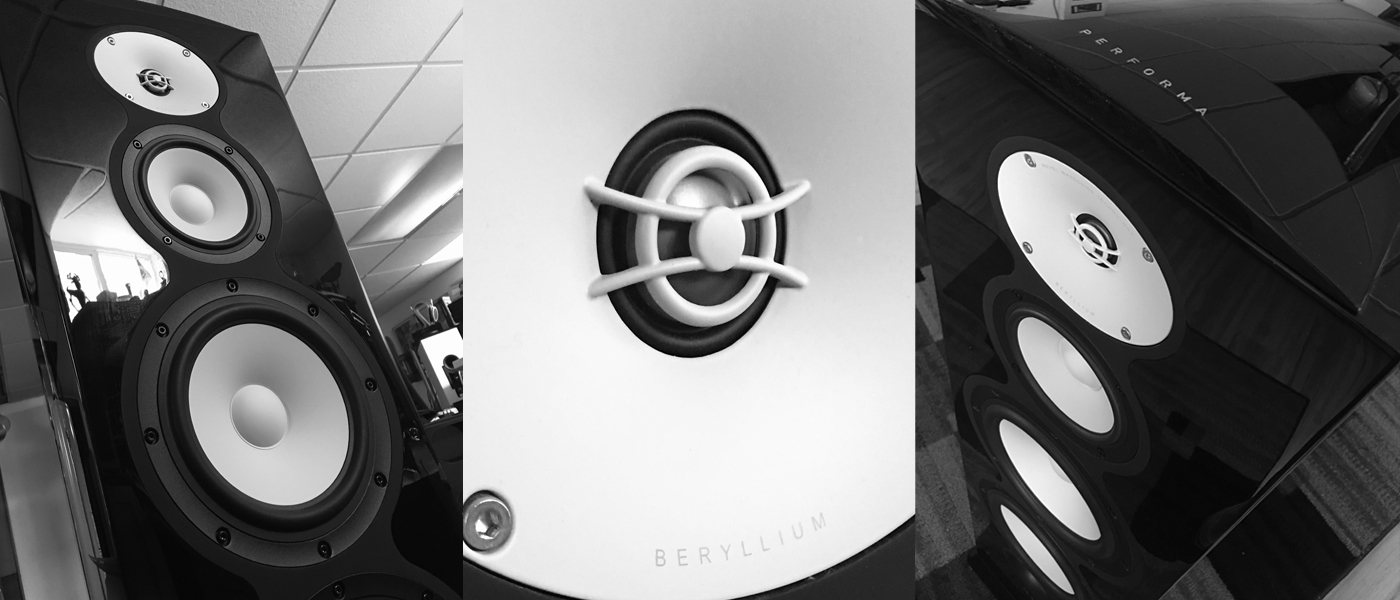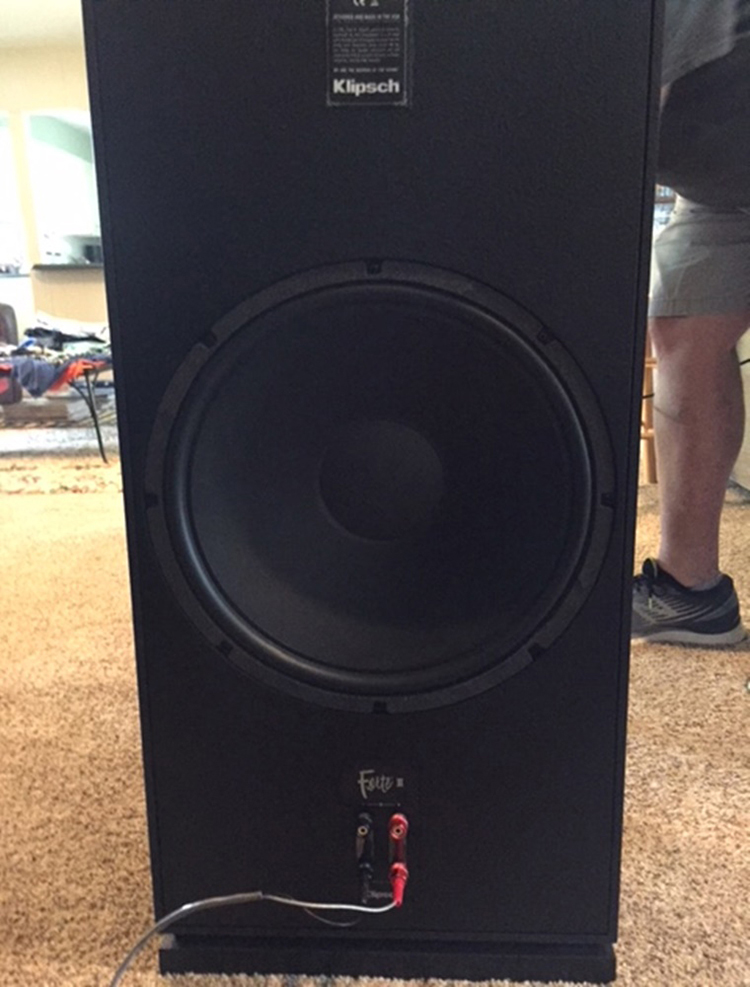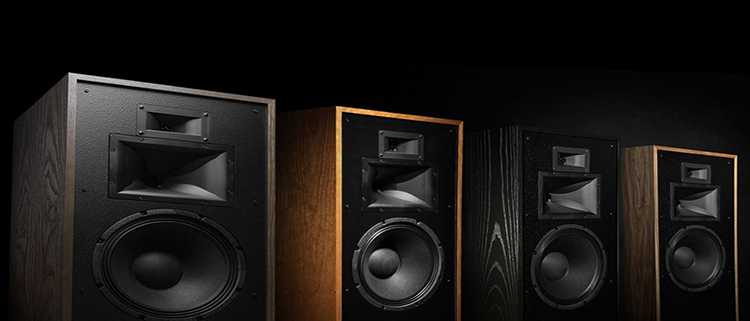
The Forte III benefits from the ongoing testing and research by the Klipsch engineering team. The current Forte III speaker is attractive, impressive on the test bench, and sounds great.
Klipsch Forte III
- 3 Way Horn Loaded Design
- 15” Passive Bass Radiator
- Grain Matched Wood Veneers
- High Sensitivity/Efficiency
- Full Range Performance
Horns, why horns, or in my case Klipschorns? I fell in love with audio as a youngster. In my teens, I remember some inspiring and life-changing moments during my audio journey. One fated day I heard a pair of the original Klipschorns at a dealer that just blew me away. They just sounded so lifelike. During the 1970s the Klipsch company continued to grow and in time there was a need to expand the original Klipsch speaker line-up. The original Klipsch Forte (current model under this review) had its debut in 1985, but the beginnings of the speaker came much earlier.
By 1980, Paul W. Klipsch’s drive to push the boundaries of sound reproduction along with the financial growth of the company allowed Klipsch to hire young, creative engineers to develop the new wave of Klipsch speakers. This group of young engineers who included Gary Gillum (who joined Klipsch in 1974), Jim Hunter, and later Roy Delgado, brought their expertise and passion to help create what is now the third installment of the Klipsch Forte. To help with research and design efforts, Klipsch designed a state-of-the-art anechoic chamber and had it built in Hope, AK., the home of Klipsch audio (Klipsch was granted a patent on the anechoic chamber arrangement design in 1983).
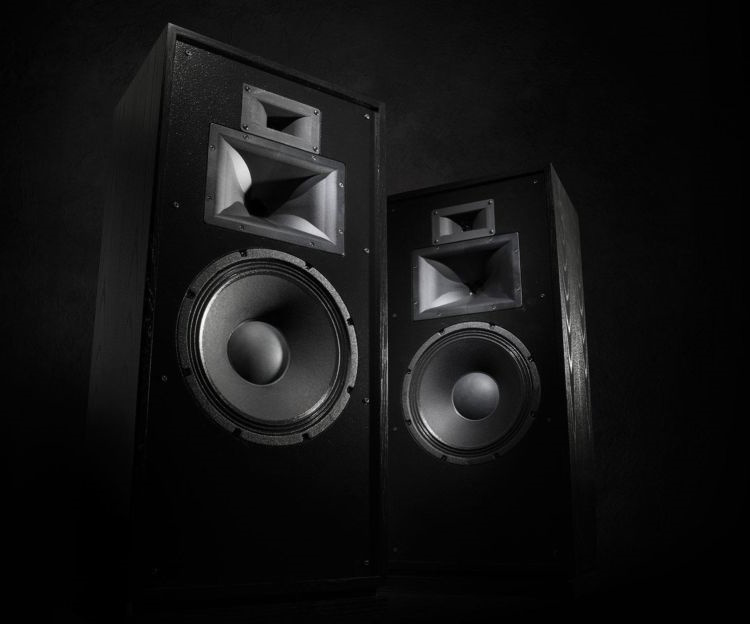
FREQUENCY RESPONSE:
(+/- 3 dB) 38Hz – 20kHz
SENSITIVITY:
99dB @ 2.83V / 1m
POWER HANDLING (CONT/PEAK):
100W / 400W maximum SPL 116dB Continuous
NOMINAL IMPEDANCE:
8 ohms Compatible
CROSSOVER FREQUENCY:
HF: 5.2kHz MF: 650Hz
HIGH FREQUENCY DRIVER:
K-100-TI 1” (2.54cm) Titanium diaphragm compression driver on a K-79T horn
MIDRANGE:
K-70 1.75” (4.45cm) Titanium diaphragm compression driver on a K-703-M horn
LOW FREQUENCY DRIVER:
K-281 12” (30.48cm) Fiber-composite cone woofer, KD-15 15” (38.1cm) Passive cone radiator
ENCLOSURE MATERIAL:
3/4” MDF
INPUTS:
Dual binding posts / bi-wire / bi-amp
DIMENSIONS:
HEIGHT 36” (91.4cm) WIDTH 16.5” (41.9cm) DEPTH 13” (33cm) WEIGHT 72lbs (32.7kg)
FINISH OPTIONS:
American Walnut, Black Ash, Natural Cherry, Distressed Oak
GRILL OPTIONS:
Black knit grille cloth, Lambswool grille cloth
PRICE:
$3998.00 pair
Company:
SECRETS Tags:
Klipsch, Klipsch Speakers, Klipsch Bookshelf speakers, Speakers, Floorstanding Speakers Review 2019
Under Paul W. Klipsch’s guidance, Gary Gillum began working on a design for a speaker that would deliver more bass from a smaller cabinet. Experimenting with passive radiators, or what Klipsch engineers called “drone“ speakers, the engineering team arrived at a speaker design that provided good bass extension from a small foot-print box. It featured a rear-firing 12” passive radiator, a riser base to bring the tweeter to ear level alignment for better imaging, and of course was horn-loaded for mid and high frequency drivers resulting in superior efficiency.
The new Forte speaker also benefited from a new horn-loaded tweeter designed by Gary Gillum and Paul W. Klipsch which resulted in being the first Klipsch driver to reach up to 20kHz. The original Forte was well received by customers and critics. Julian Hirsch of Stereo Review gave an extremely positive review based on his measurements and listening. Aside from one of the smoothest and widest frequency response results from a speaker that Mr. Hirsch had ever tested, he also found that the Forte had the lowest bass distortion ever measured by his lab from a speaker!
The Forte II and now the Forte III have benefited from further refinements. The Forte II features a larger 15” passive radiator as well as a repositioning of the 12” driver in the cabinet to minimize standing waves and improve output. New engineers Roy Delgado and Kerry Geist worked at developing a new kind of horn. Their efforts and those of the rest of the engineering team helped create the Tractrix horn for the Forte (and subsequent speakers manufactured by Klipsch). The Tractrix horn features a shape that combines the advantages of different types of horns without many of their compromises. A more technical description of the Tractrix horn written by Delgado, Geist, and Hunter can be found reprinted in Audio Magazine of March 1991.
Secrets Sponsor
The Forte III features an updated 12” woofer with a larger voice coil different from the one in the Heresy III. When asked about the differences between the woofers in the Heresy III and Forte III, Jon Benefiel, South Central Area rep for Klipsch said of the Forte III woofer, “You have to bend at the knees to lift it”. The Forte III also has a new 15” rear-firing passive radiator.
The mid and tweeter speaker drivers in the Forte III are all new state of the art titanium drivers. A new phase plug for the mid-range driver has been added too. Also new, the mid-range driver features an important improvement to the Tractrix horn. The new modification is the patented Mumps technology, engineered by Roy Delgado (who is now the head of engineering at Klipsch). The Mumps technology further controls the coverage by the mid-range horn and results in developing a more accurate sonic image.
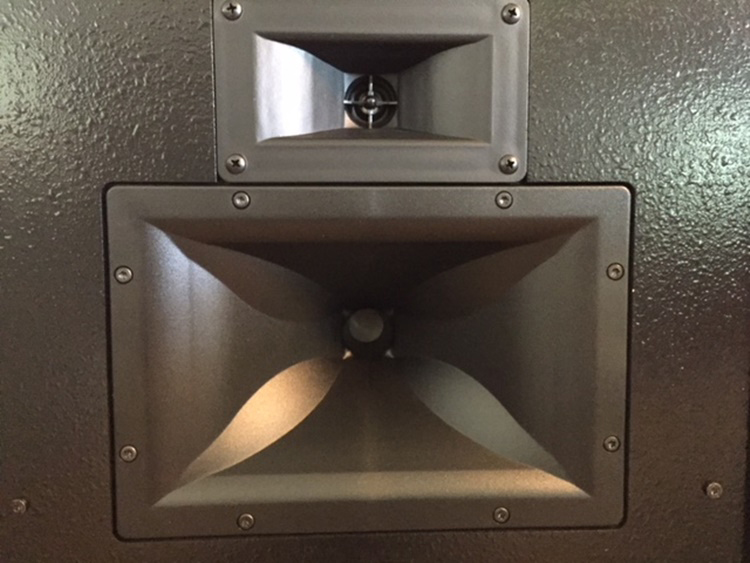
The crossover for the new Forte III speaker has been carefully re-designed, as well. Even though Paul W. Klipsch is no longer with us on this earth, his influence continues. Paul W. Klipsch was involved in the creation of the Forte I & II, and especially in the development of the crossover. Paul W. Klipsch stated that “all speakers should be fine-tuned by the human ear”. He continued working on crossover refinements and kept detailed notes on his work throughout his life. Roy Delgado (who worked closely with Paul W. Klipsch to develop the Jubilee speaker) used Paul W. Klipsch’s notes to help him in fine-tuning the new Forte III crossover.
The combined efforts of the Klipsch design team, past and present, have resulted in a 3-way horn design speaker with a rear-firing passive radiator. The Forte III has a much smaller footprint than most of the older Klipsch floor standing speakers yet has bass extension approaching that of the Cornwall and the Klipschorn.
When the Klipsch Forte IIIs arrived at my shop (my wife and I operate a beauty supply store) they arrived on a pallet. The Fortes are large and heavy and Klipsch makes sure these handcrafted speakers arrive intact to their destination. I mention this because unpacking will usually require some help unless you are in good physical shape. From my experience in selling audio years ago, I learned to tip the speaker packing boxes onto their top and then cut the packing tape from the bottom flaps with a box cutter. I then push the flaps open and tilt the speaker on its base and slide the box up carefully. After that, it is easy to slide off the plastic and move the speaker to the listening location.
Before I continue, I must comment on how beautiful the Klipsch Forte III pair look. These speakers are hand-made at the Klipsch factory in Hope, Arkansas. The pair I received were finished in gloss black ash, the grain, fit and finish are a sight to behold. Klipsch uses book-matched veneers for the Forte III and the craftsmanship used to create the box is apparent. My curious wife took one look at them and said, “Oh, I hope we can keep these…” Score a big plus on the spouse acceptance factor Klipsch!
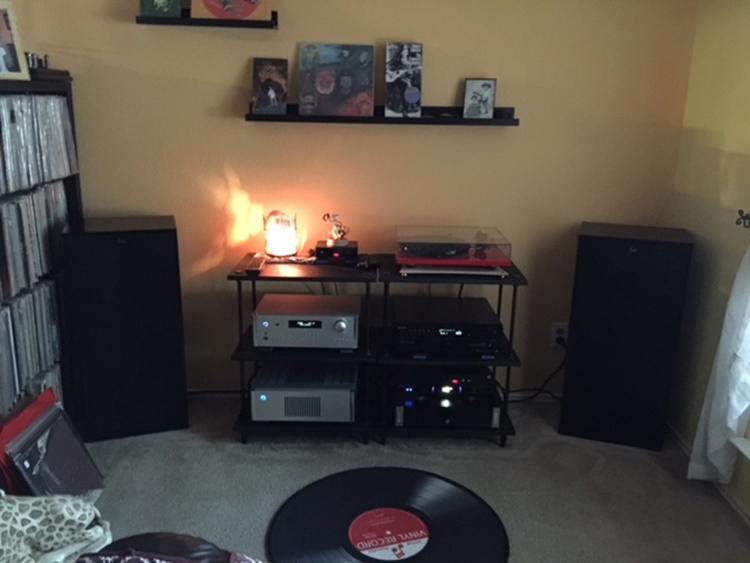
I also think the opaque black grill is sexy. In the light, you’re able to just make out the shape of the drivers behind them. For an audio addict like me who likes to look at the drivers, this is like lingerie on a beautiful woman. There is a hint of mystery and magic with the Forte III grill in place. Topping the grill is the Forte badge. Altogether, the refined aesthetic of the Forte speaker instills pride of ownership in a fine, hand-made instrument.
Following the Klipsch manual, I placed the speakers close to the back wall and in the corners. Since the Klipsch Forte features a rear-firing 15” passive radiator, Klipsch recommends placing the speaker at least 2” away from the back wall but more like 10” is preferred. This placement for the Fortes worked well in my listening space physically and audibly. Klipsch also recommends that the speakers be toed-in so that the midrange and tweeters are facing directly at you from your seated position. I connected the Klipsch Fortes to a Rega Elex integrated amp and used a single speaker wire cable pair from Rega. As time went by, I experimented with bi-wiring and bi-amping (the Klipsch Forte has provision to be wired this way).
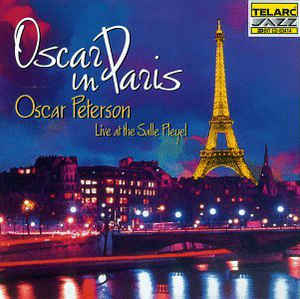
Once the Forte IIIs were connected to the system I loaded a disc, the Telarc CD “Oscar in Paris”, to make sure I had sound and no problems with my set-up. I have to say that I was startled by the sound of the piano. Fresh out of the box the Klipsch Forte III produced a sumptuous, immediate sound from Oscar Peterson’s piano. I was not prepared to do any serious listening, but I sat down and was immersed in the performance.
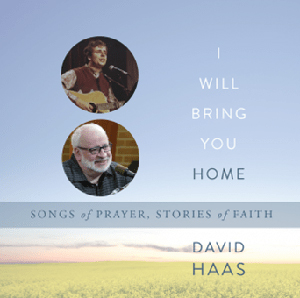
Curious to see what else the Forte III could do, I loaded Davis Haas’ new CD, “I Will Bring You Home” into my CD transport. My wife and I had just seen Mr. Haas in concert the previous night at the Incarnate Word College in San Antonio. As the music played, I was struck at how well the Klipsch Forte III reproduced David Haas’ voice in timbre. Very truthful, I thought of the likeness and a very promising start to my review.

For critical listening, I like to use the recordings by La Vienta. I do this because I began listening to the duo before they recorded their first Grammy-nominated CD, “Jazzmenco”. La Vienta (Stefan Schyga and Mario Otero) was the house band at the El Paso, Texas landmark Camino Real Hotel in the early 1990s.
The beautiful architecture of the hotel with the soaring stained-glass top window above the bar provided a sumptuous atmosphere to listen to the guitars of the duo. During my single years, I spent many an evening drinking cocktails and chatting with the high heeled senoritas in summer dresses that frequented the establishment. Later I was fortunate to be able to take guitar lessons from Mario Otero, hence I like to use the recordings as I am very familiar with the sound of the music as well as the nice memories they bring.
As I listened to the first track, “Tu Sonrisa”, I heard the character of the two guitars distinctly. Stefan plays a classical flamenco guitar and it produces a clean, tequila-like sound. Mario plays a steel string Gibson guitar and it produces a darker, bourbon-like tone with a steel string bite. The tone on the guitars and the instruments that accompany the music were presented in fine balance. The Klipsch Forte IIIs had the ability to render the attack and decay of the strings and percussion. It seemed like you could feel and hear the intent of each stroke or strike. Being a musician, I really appreciated the dynamic rhythmic pulse that the Klipsch Forte IIIs delivered on this music.
The track “Summer Rain” starts evocatively with a recording of a thunderstorm. In El Paso, a summer rain is most welcome and usually comes in the early evening. The bass from the Forte III seemed to flex the walls but was not “boomy”. As the thunder fades, a rain stick comes in to create the sound of a downpour. In some systems, it sounds as if there really is rain, but on the Klipsch Forte III, the instrument is clearly heard. I distinctly heard the gourds rolling in the wooden casing of the rain stick. As the music comes in, I could hear the complex delicacy of the cymbals and the skin of the drums along with the ring of the guitar strings. Delicious and sumptuous sound is what I experienced, and it made for an enchanting listen.
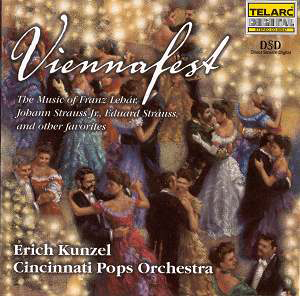
Next, I thought I would try some light classical through the Klipsch Forte III. Listening to “Viennafest” by the Cincinnati Pops I was instantly pulled into the music emotionally. The precise rhythm and timing of the orchestra are presented in a visceral and infectious way by the Klipsch Forte III. The opening of the Radetzky March by J. Strauss, Sr. pinned me to my seat.
It also made my head nod and toes tap in time. I enjoyed it so much I played the track twice!
It wasn’t all crash of cymbals and beat of drums that the Forte IIIs presented well. On “Wein, Wein, nur du allein” by Rudolph Sieczynski, the solo violin sang sweetly and soared. Meanwhile, the harp arpeggios that accompany the violin in the background were heard in beautiful clarity and balance. It was as if I could imagine conductor Erich Kunzel say, “vibrato, more vibrato everyone!” As the rest of the orchestra joins in and the music swells the effect is lovely. The music seemed like a sentimental reminder of days gone by.
Secrets Sponsor
While the music played the Klipsch Forte III communicated the soul of the music and maintained a clear, crisp focus on all the instruments. The bass was impressively clean. The transient speed of the bass drivers kept up with the speed of the mid-range and tweeter horns.
What struck me while listening is the way that the Klipsch Forte III sounds like a single driver loudspeaker. Having owned and lived with full range electrostatic loudspeakers in the past, I have experienced the magic of coherence from reproduced music. That happens when the drivers in a speaker are so well blended that the music is presented in a life-like manner. Full range electrostatics in my experience, however, do not have the frequency response or more importantly the dynamic scale presented by the Klipsch Forte III speaker. I am in awe of the achievement here by the Klipsch engineering team. The speaker seemed to move out of the way to allow the flow of the notes to emerge in an organic, musical way.
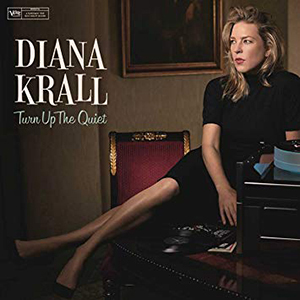
Turning to vinyl, I put on Diana Krall’s “Turn Up the Quiet” LP. Vivid, was how I could describe my initial reaction to the recording. The mics are up close, and they captured the piano fingering and voice of Diana Krall so well that she seemed to be in the room. I had my audiophile friend Jason visiting with me during this listening session.
His reaction was “you can hear her forming the words in her mouth”. Upright bass, drums, violin, guitar, and piano were presented in stunning clarity. The violin on the track “I’ll see you in my dreams” is phenomenal. It sounds as if he is stretching and bending the notes in a divine way. It was a fun and enjoyable afternoon of listening.

I will share one more listening experience with you. King Crimson’s “In the Wake of Poseidon” is an album that I have listened to for more than 48 years. Listening to it today I think that the music is overlooked because it followed King Crimson’s incredible debut album, “In the Court of the Crimson King”.
I bought “In the Wake of Poseidon” on the strength of the first album when it was released. My copy is an early original Island pressing (which are well regarded by collectors). I decided to invite my friend and fellow audiophile Matt to listen to the Forte III. Matt and I had the pleasure of catching the current King Crimson on tour last year. We are both big fans.
For preparation, I made sure my old copy was cleaned and ready. Earlier this year I was introduced to Pure Vinyl record soap cleaner by Alan of Direct Audio in Dallas. The stuff really works well and has breathed new life into the older records I own. After cleaning with the Pure Vinyl, I played my copy for Matt. As the stylus hit the record grove, I noticed a lowering of the surface noise, and then a more immediate and clearer sound. Matt and I settled into the music and when the side ended, I noticed Matt emerging from a trance-like state. “Wow, that was incredible”, was Matt’s response. I will say that I have never heard the music on my record played back like it was with the Klipsch Forte III. What stood out to me was the way the Forte III, especially on the cut “Cadence and Cascade”, made the music sound as if it were being created by human beings right in front of us. Just an amazing experience from the Klipsch Forte III.
Secret’s Editor Jim Clements helped me in testing the Klipsch Forte IIIs in his home on a warm summer day. Jim has a good-sized living area and we set up the Klipsch Forte III 6 feet away from the back wall and a good 15 to 20 feet from the side walls. The Forte front-fired into the entry to his open kitchen space which was about 10 feet from the front. For the distortion test we mounted the microphone 12 inches from the center of each driver that was being tested. On the frequency sweep, we set the mic on axis 1 meter from the front of the speaker. Jim’s room does not have any special padding or acoustic treatment. Before we started, Jim handed me ear plugs as we were going to do the tests at 100db reference per frequency. Grinning devilishly, he said, “I’ve been known to blow-up tweeters”! I held my breath and watched the monitor from a safe distance.
The first screen picture is a tone at 1kHz. Jim looked up at me and said, “Wow”.
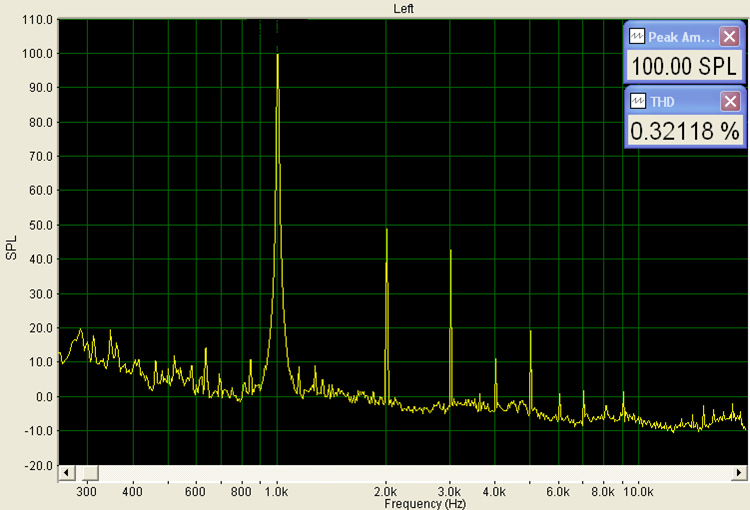
The second picture is a tone at 500Hz. Jim looked up and said, “Wow” in a little lower tone.
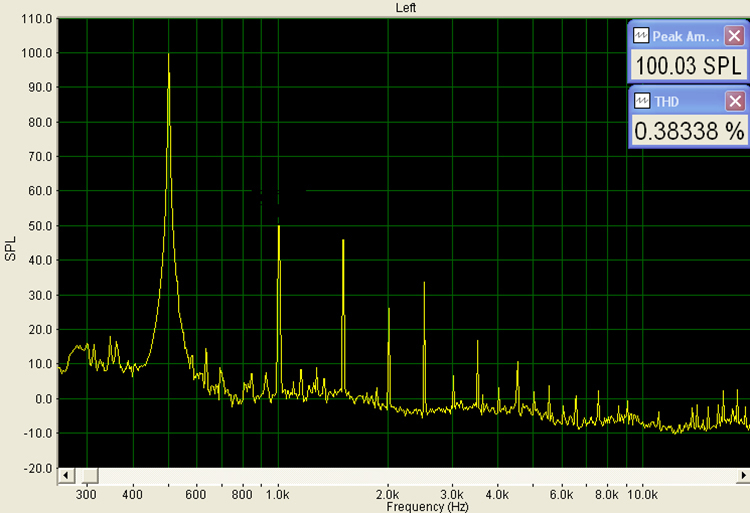
The next image is a 2.5 Khz test tone. “Very low distortion”, commented Jim.
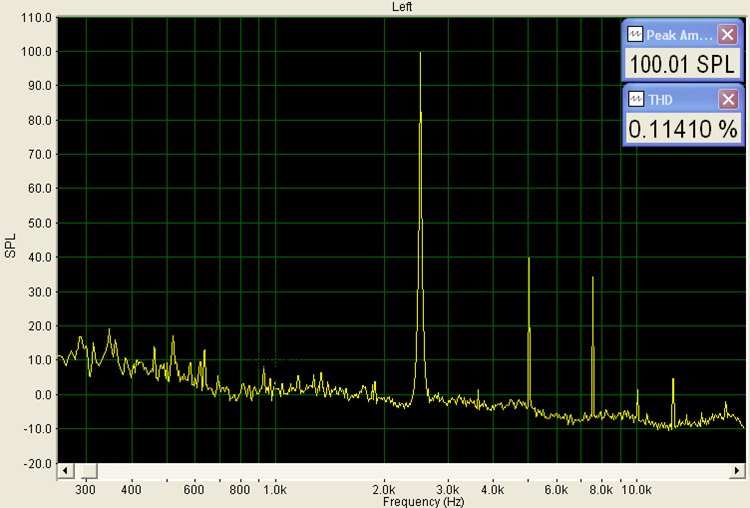
The next image is a test tone at 10Khz. “Not bad Frank, not bad at all” said Jim.
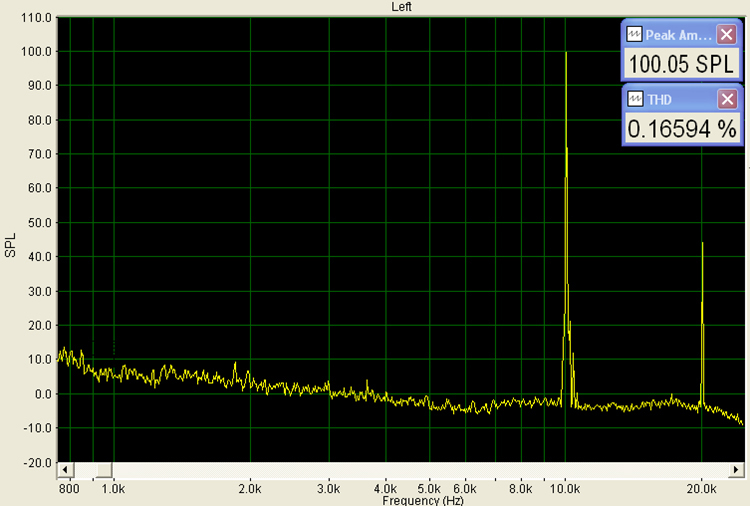
Next we did a test tone at 100Hz.
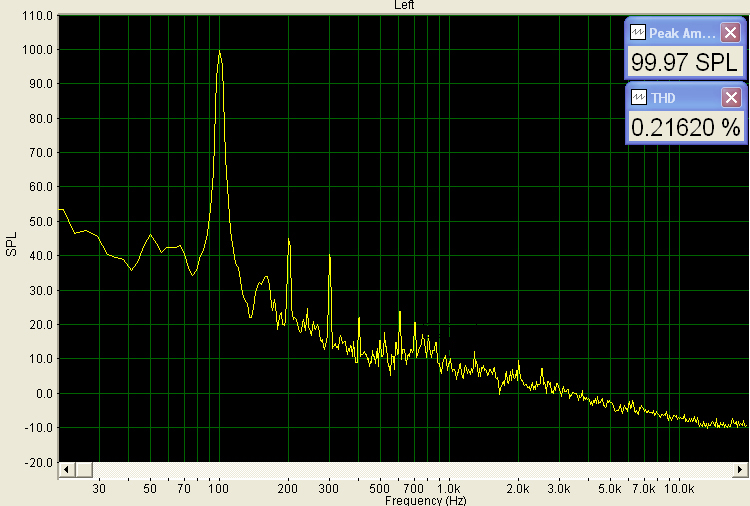
The next image is a tone for 80Hz.
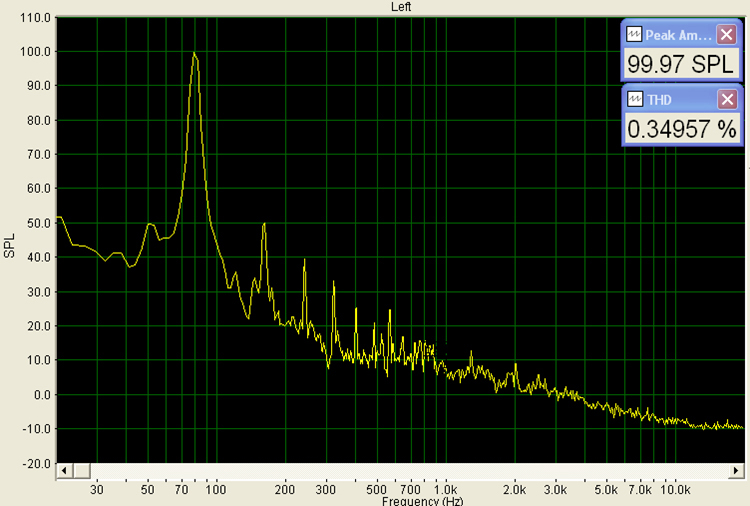
The last image is for a 40Hz test tone.
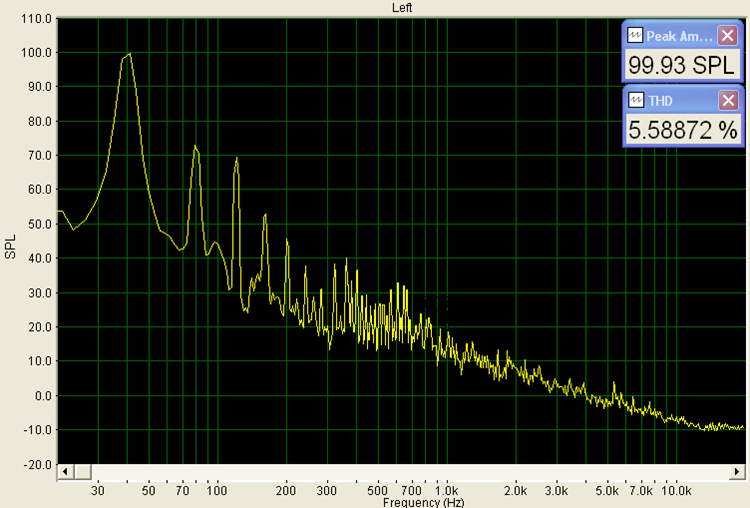
We also did a Pink Noise test showing extension down to 50Hz

The tests confirm the clean, smooth sound output I heard from the Klipsch Forte III. Not every speaker can boast distortion specs that would be respectable coming from electronics, solid state or tube!
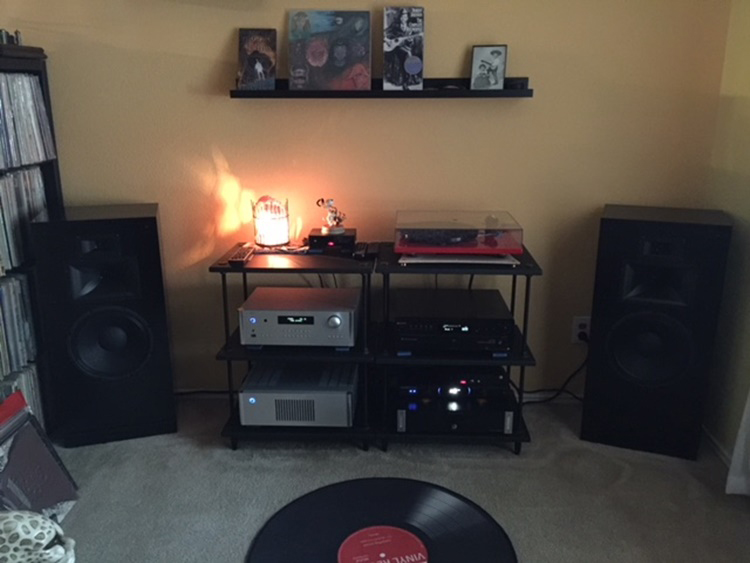
Featuring impeccable engineering and spectacular sound, the KLIPSCH FORTE III is a complete, musical masterpiece of horn-loaded speaker technology.
- Beautiful Cabinet
- Smooth, Balanced Sound
- Easy to Drive
- Low Distortion Sound
- Deep, Accurate Bass
- Dynamic Ease
- Infectious Rhythmic Timing
- Big Sound, Small Footprint
- None
During the review period, I thought that the best part of the Klipsch Forte IIIs performance was the bass. As the Forte III has broken in I am finding a fascination with the way the Forte III reproduces the mid-range frequencies. The mid-range on the Forte III borders on the magical, and on vocals and acoustic music it is magical.
So, how does the Klipsch Forte III compare to my older 1970’s Klipsch Cornwall 1s? The Forte III is superior in every way! Perhaps in a larger room, the older Cornwall 1s might give you a more majestic presentation of the music. In terms of bass distortion, high frequency extension, and especially mid-range clarity the Forte III is much, much better.
On the test bench and in listening, the Klipsch Forte III is outstanding. It shows how much the Klipsch engineering team has improved (through research and technology) an already legendary product. During the review, I ran the Klipsch Forte III with a 3.5-watt SET amp, a 70-watt integrated, and eventually with one and then two 130-watt power amplifiers. In each case, there were excellent results, with the Klipsch Forte IIIs revealing differences between amps, pre-amps, cables, etc. I can heartily recommend the Klipsch Forte III to music lovers that want a lasting, fulfilling relationship with their music collection. The Klipsch Forte III has the breath of life.


